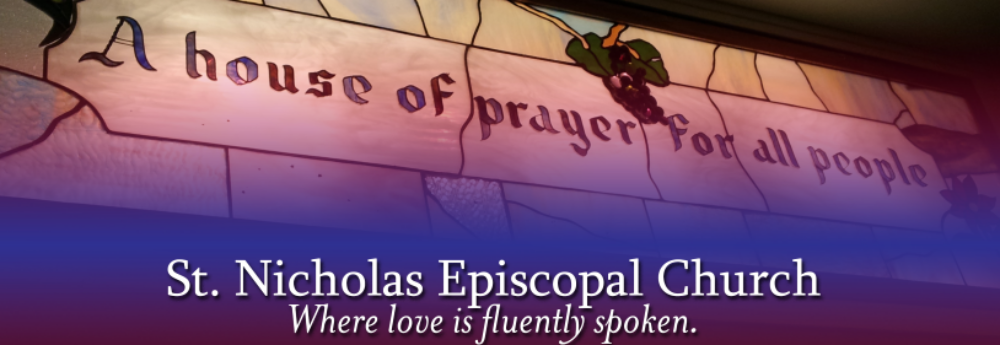The good folks at AO often travel, and often find themselves worshiping in an Anglican or Episcopalian church away from home. They’ve recently visited 3 parishes they’ll call “St Almond, St Boniface, and St Cantilupe, and were made welcome (or not) in 3 completely different ways.
How do these ways relate to how we “do welcome” at St Nicholas? Well, it’s certain we’re not like “St Almond.” Let’s hope we’re not erring on the side of “St Boniface,” but achieving something more like “St Cantilupe.”
Anglicans Online | The online centre of the Anglican / Episcopal world
Last week at St Cantilupe, we walked from our hotel past opulent shops, 5-star hotels, and busy bookstores to find the church tucked away near a world-famous tourist trap. Our expectations were low. But immediately inside the narthex, a pleasant and quiet man handed us a service leaflet and said “Good morning. Please sit anywhere you like.”This revealed that he knew we were visiting and that he would not make a fuss over it.
The cantor, a petite young woman with a crystalline, voice stood up to teach the congregation the response to be used in the psalm. This simple act included us because we were learning alongside everyone else. After the greeting, the rubric in the prayer book notes “Words of welcome or introduction may be said.” W’ed never before experienced anyone actually saying such words, but this priest did. What caught our attention was that in those words and all others, he addressed his welcome not to the newcomers, not to the visitors, not to the strangers, but to everyone.
The service continued; it was more than an hour and a half long, but we were enthralled by it all. The endless stream of inaudible or incomprehensible announcements by members of the congregation, just before the dismissal, was a good transition between the extraordinariness of this worship experience and the return to the city streets and the walk back to our own dimension.
It’s been a week since we were at St Cantilupe, 8 time zones from home, and we now understand what they did so well: they were behaviourally inclusive. We visitors were treated neither as interlopers nor as freaks, but as ordinary people, indistinguishable from those standing next to us who might have been there for decades. Simply by being there, by standing in the nave and singing the hymns and eating the bread and drinking the wine, we became at least for that one day one of them. Neither the clergy nor the congregation projected any sense of ownership, any sense of possessiveness, any need to guard their faith or their church or their sacraments against interlopers.
What is “behaviourially inclusive?” It means you are treated as one of us, without question, and without making you stand up and introduce yourself. You don’t have to make yourself over to conform with us, either. We may point you toward the basket of stick-on nametags at the welcome table, but only so you know where they are if you choose to write your name and stick one on. Many of us wear them every week as a courtesy to each other, and also to you; so that you’re not alone in wearing a bland little “Hello My Name Is” label like a lost child or lonely person at a mixer.
Many of us decorate our name-tags with little cartoon figures or silly writing – you can too, if you like.
We hope we’re more like St Cantilupe than either of the other two parishes in the linked article. Be sure to read about how they did in welcoming the Anglican Online staffers on their journeys.


